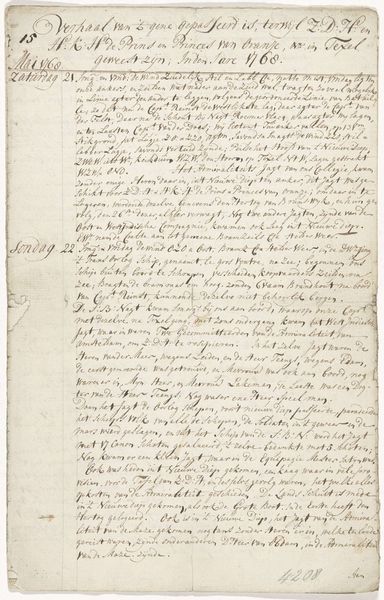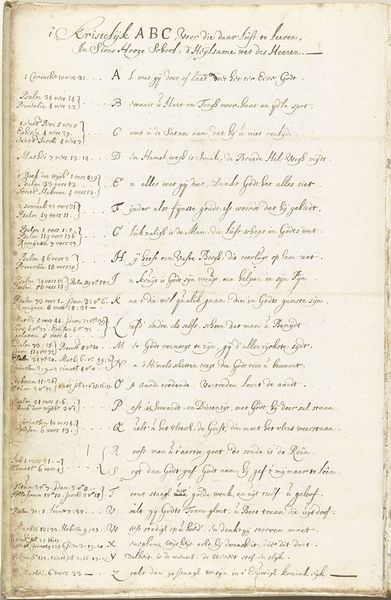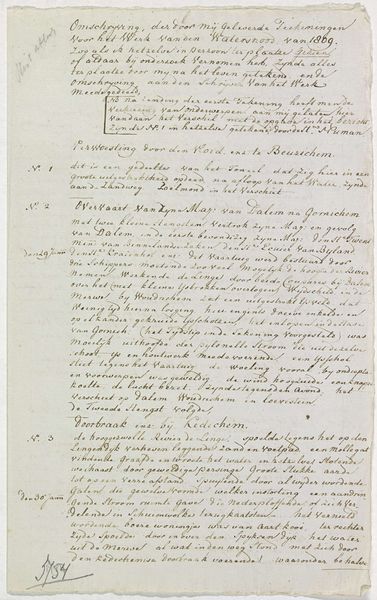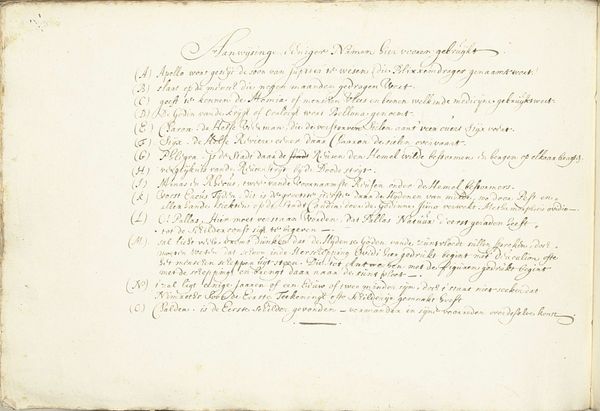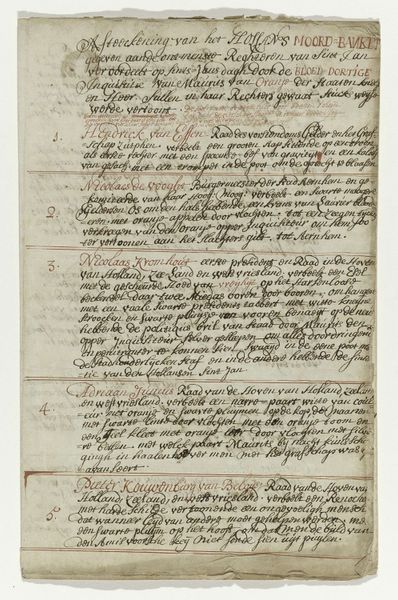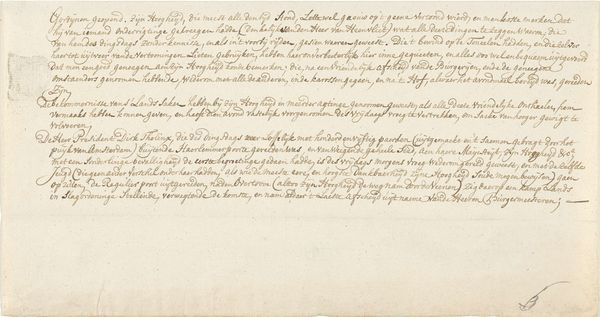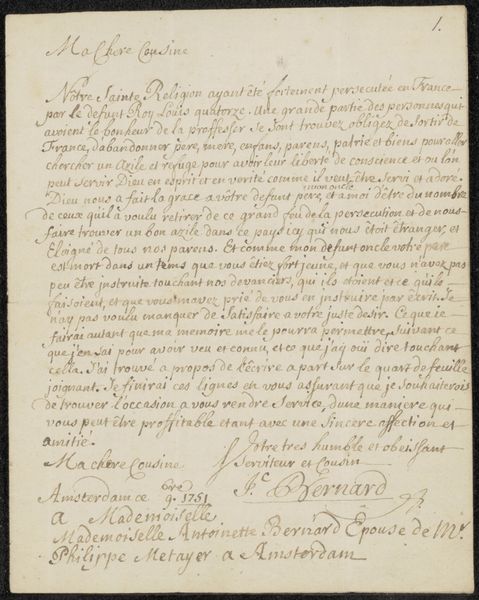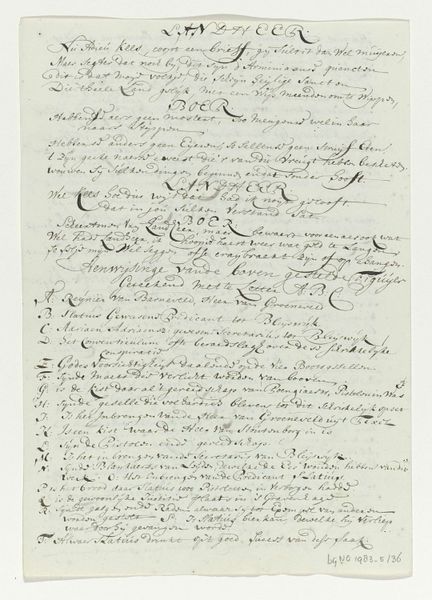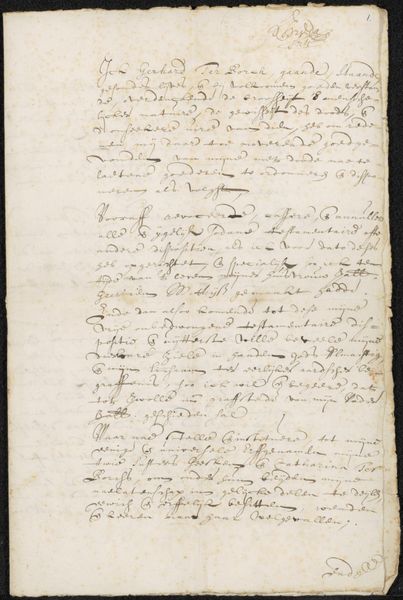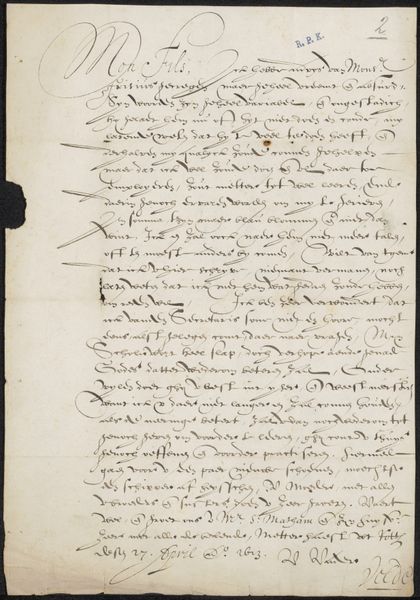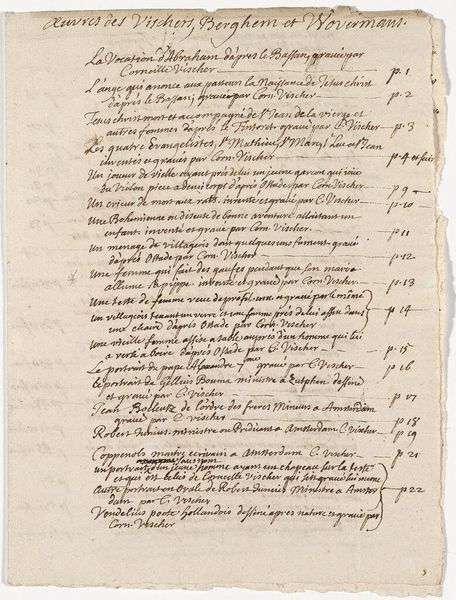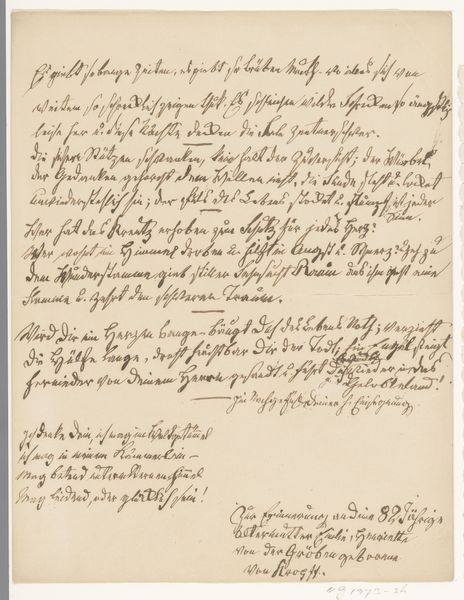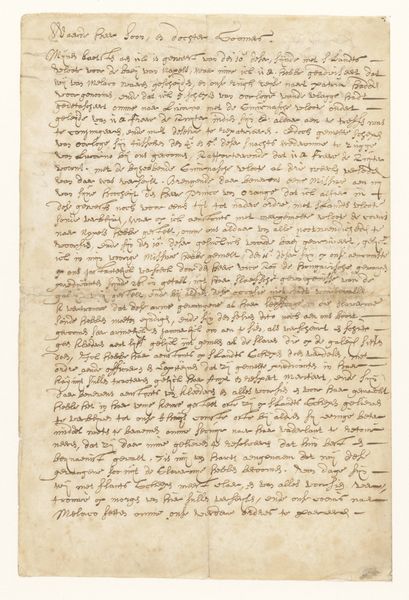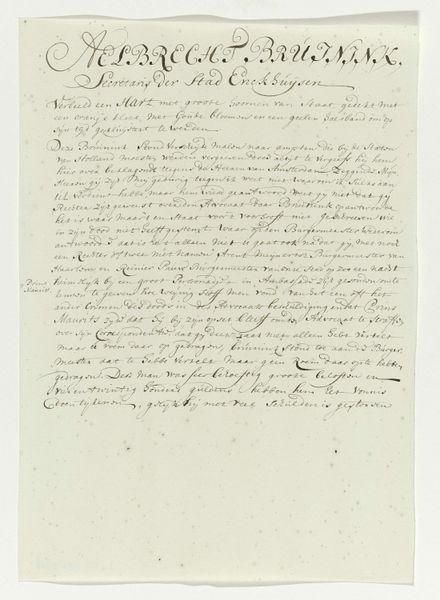
Transcriptie van een verklaring van de prent met de drie hoofdrolspelers in de samenzwering tegen Maurits, 1623 1850 - 1899
0:00
0:00
anonymous
Rijksmuseum
drawing, paper, ink
#
drawing
#
paper
#
ink
#
history-painting
#
academic-art
Dimensions: height 316 mm, width 202 mm
Copyright: Rijks Museum: Open Domain
Curator: Here we have a drawing, titled "Transcriptie van een verklaring van de prent met de drie hoofdrolspelers in de samenzwering tegen Maurits, 1623". It's unsigned, made with ink on paper, and is dated sometime between 1850 and 1899. It's currently held at the Rijksmuseum. Editor: It appears to be a page covered in tightly-packed handwriting. It’s somewhat daunting to look at; all the lines of text give it a very busy, almost frantic energy. I can already sense its historical weight. Curator: Indeed. What interests me here is the production of this "transcription." The drawing itself is a reproduction, a copy removed in time from the original "prent," or print, related to the conspiracy against Prince Maurits. So we’re already dealing with layers of mediation and labor. Editor: You’re pointing to the distance between the event and our understanding of it. How the politics of imagery work through copies and transcripts like this—it highlights how historical narratives are constructed. Do we know who made the original print? Or this copy? Curator: Both remain anonymous. The act of transcription itself is a form of labor. Someone, at some point, dedicated time and skill to recreate this document. Was this for scholarly reasons, perhaps to distribute the original material widely? Editor: And how do institutions, like the Rijksmuseum, then play a part in deciding what documents matter? Who decided that this transcription deserved to be collected and displayed? Its aesthetic isn't exactly striking. Curator: Exactly. We see the historical and social layers—the initial conspiracy, the print made to record or publicize it, and then this later act of transcription and preservation. Each stage is an act of interpretation and value judgement. And let’s not overlook the material conditions: ink, paper, handwriting—these ground the work in a very specific time and place. Editor: The physicality of the handwriting almost lends an air of authenticity despite being a copy of the original historical evidence. It is easy to see how this can impact our interpretation. Curator: Ultimately, this work makes us think about not only the historical event it describes, but about the entire process of recording, reproducing, and remembering. Editor: Yes, a potent reminder that what we see in a museum is often the product of many hands, and many decisions, layered across time.
Comments
No comments
Be the first to comment and join the conversation on the ultimate creative platform.
